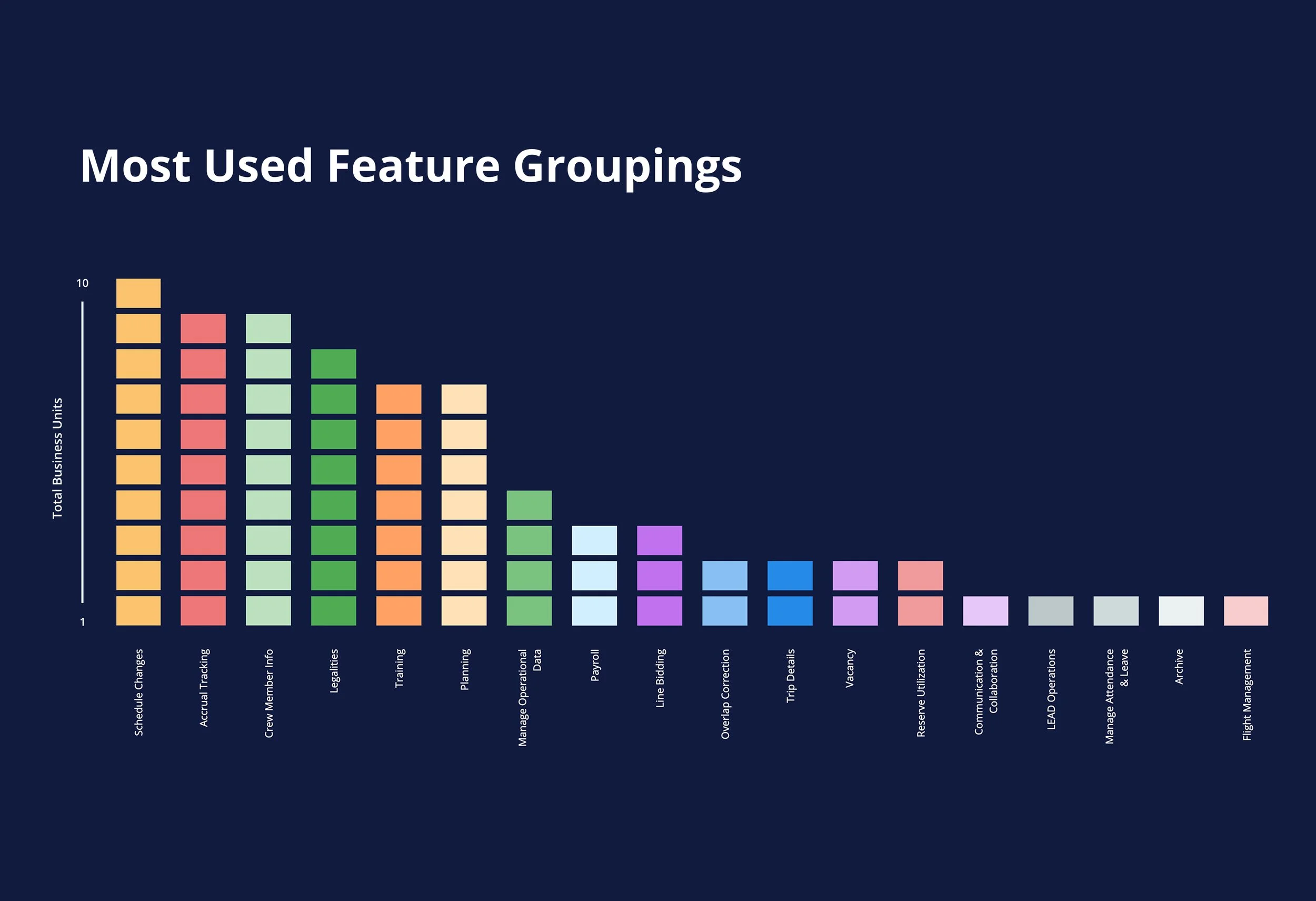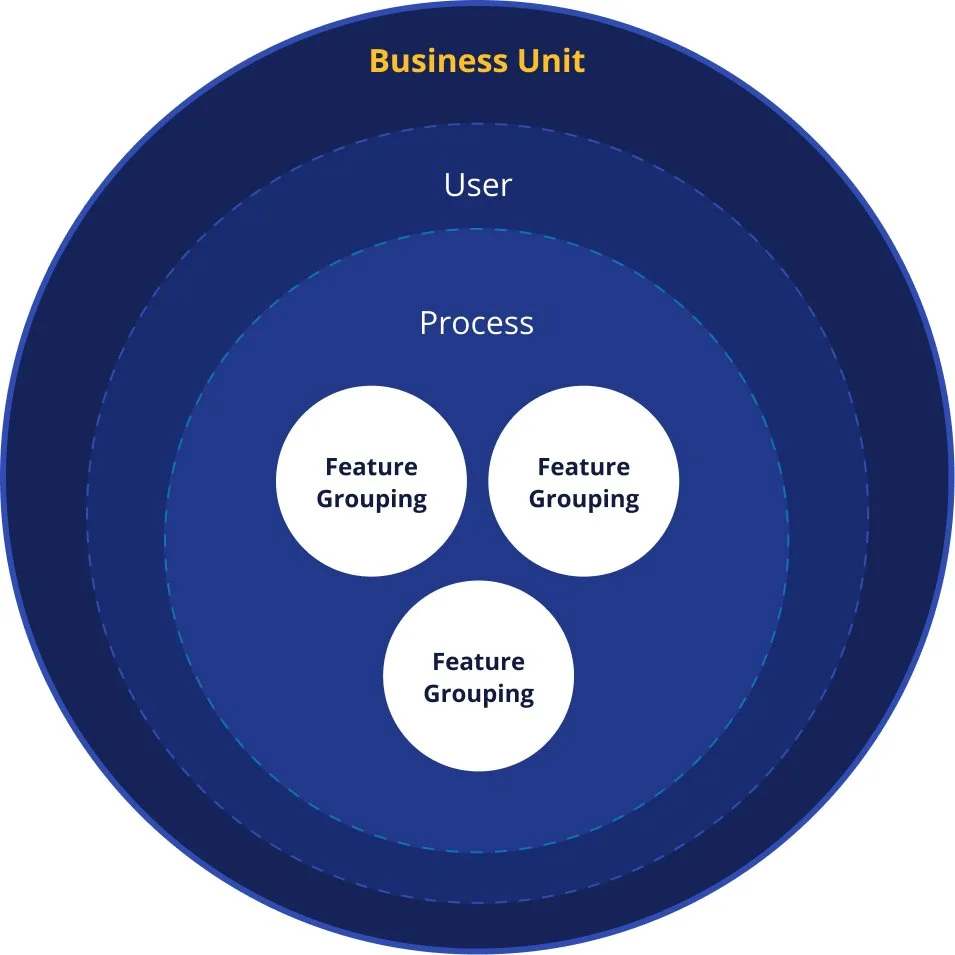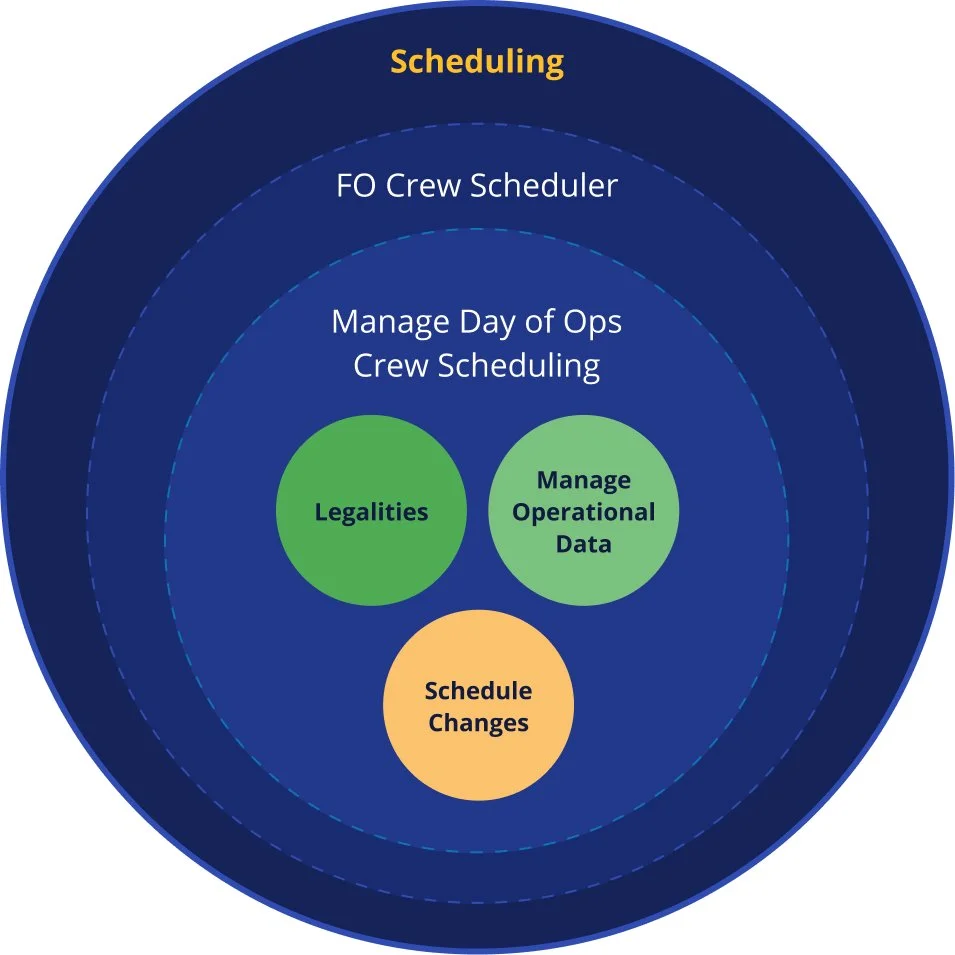
The Ask
To assist in planning efforts for modernizing Southwest’s Crew Scheduling Experience, the Research & Design Team was asked to map known Users of the Crew Scheduling Software (CSS) to the features they leverage.
The Methods Used
We used several sources to gather relevant data regarding CSS Users and the features/functions they access within the system.
Initial Research Activities conducted:
IFO Tech Product Manager Inquiry
Business Architecture Process Mapping
CSS SME Functional Mapping
LeanIX Relations Explorer
My Role
Research Support & Synthesis
Data Visualization
Key Takeaway
We found that some features are universally accessible, while others are role-based and pre-segmented within the system. Additionally, Admins and Super Users have access to everything.
What We Learned
By mapping CSS Users to the Feature Groups they access, we were able to understand:
The relationships between CSS Users and other systems and roles associated with documented processes
Business Units that consume and manipulate the most information in CSS
Most widely accessed Feature Groupings across Business Units
Defining Feature Groups
To clearly illustrate the connection between processes and roles, we needed to effectively convey the significance of a feature grouping. Our team defined feature groupings as:
Categories of information that are reviewed or manipulated during a process by Users within a Business Unit. In our research, processes typically require Users to access multiple feature groupings.




The Results
Better understand the functions that coincide with each role, better enabling a role-based, micro UI front end architecture
The relationships between CSS Users and other systems and roles associated with documented processes
Business Units that consume and manipulate the most information in CSS
Most widely accessed Feature Groupings across Business Units



